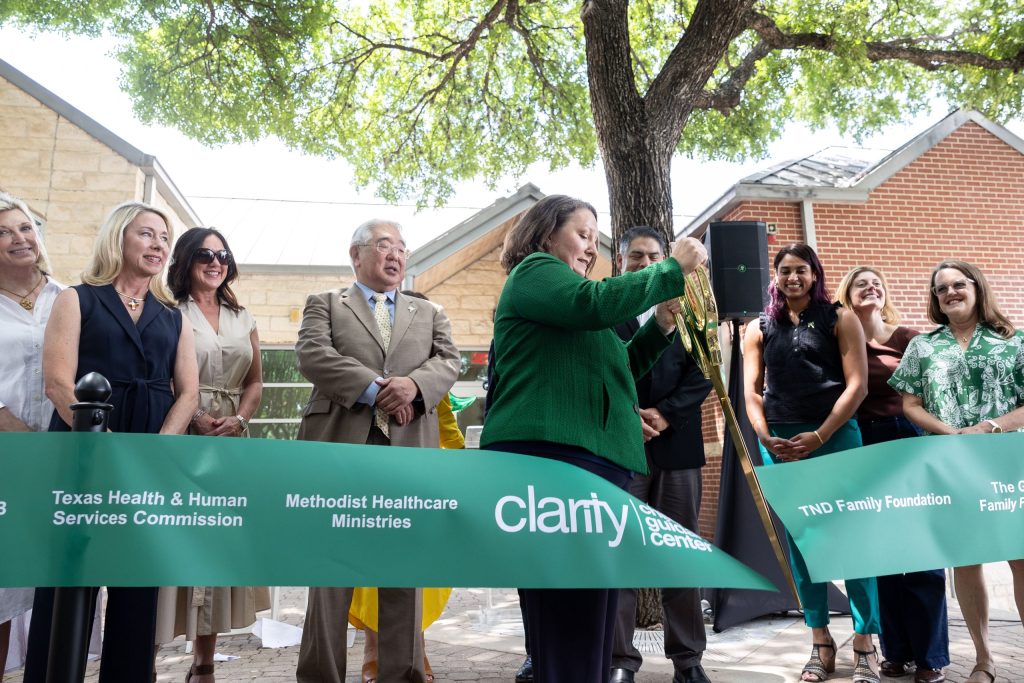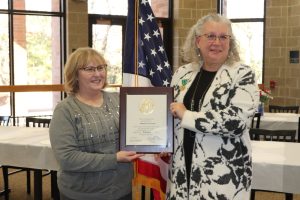This is the third article in a series exploring San Antonio’s nonprofit sector. Read the first part here and the second part here.
As the coronavirus pandemic ripped through communities around the globe, public, private and nonprofit leaders in hundreds of cities like San Antonio started organizing massive, coordinated emergency responses.
Locally, a flurry of working groups and task forces were established by the City of San Antonio and Bexar County officials to tackle the immediate needs and longterm challenges of recovery.
Charitable nonprofits were stretched “beyond their limits” during that period, said Barbara Gentry, who was a co-chair of the joint city-county philanthropy working group at the time.
Two other members of the group, who she declined to name, suggested that some of the organizations should merge or consolidate in order to ease the financial burden nonprofits were experiencing while expanding their services, said Gentry, now the Haven for Hope board chair and former head of charitable giving and vice president of community affairs for USAA.
Despite venturing the suggestion, they balked at the idea of actually doing it.
“So I said: ‘Well, that’s just great, would you two chair a subcommittee on that?’” she recalled asking the duo. Their response was: “‘Oh, no, we can’t put our names to it,’” Gentry said. “They wouldn’t touch it.”
Long before the pandemic, the idea of nonprofit mergers or acquisitions was somewhat taboo — partly because even if the need is clear, no one wants to be perceived as the “bad guy” telling everyone what to do, she said.
While none of the half-dozen large nonprofit leaders interviewed for this article offered specific suggestions on which groups should join forces, all agreed that at least some of the 2,583 nonprofits in Bexar County and its surrounding counties should consider consolidation.
“It can be done in a manner that is not ‘we’re telling you what to do,’” Gentry said. In the post-COVID funding era, “we have limited dollars. We need to work together to make sure our dollars are best invested. It could be a win for everybody.”
Strategic, thoughtful consolidation could stretch dollars further and ultimately help more people, said Kim Jefferies, president and CEO of Haven for Hope, the city’s largest homeless shelter and resource hub.
“With the scarcity of resources and the increase of need, I think in the next few years we’re going to be at a pivotal point where we’ve got to be looking at mergers,” she said.
But with each nonprofit dedicated to the unique work of their own organization, and despite increased competition for funding, few think it should be them.
“That takes strong leadership in each nonprofit and for people to put egos aside, and for boards to do the same,” Jefferies said. “We need real leaders in the community that can demonstrate how that can happen.”

Leaders of smaller-but-growing nonprofits interviewed for this story pushed back on the idea that there’s a widespread overlap of services.
A recent locally funded report showed that many nonprofits are struggling to keep up with community demand, but its findings can be interpreted in different ways — and often are, depending on who you ask.
“We have data that shows that the need is rising, it almost feels like fewer nonprofits might be a challenge,” said Nadege Souvenir, president and CEO of the San Antonio Area Foundation, which grants millions in funding to nonprofits of all sizes every year.
“It’s not really about the number of nonprofits,” she said. “It’s really about, ‘Is the necessary work getting done?’”
Merger ‘just made sense’
In 2010, the inpatient Southwest Mental Health Center and the outpatient Child Guidance Center of San Antonio — two child-serving mental health facilities — merged to form the Clarity Child Guidance Center.
“The Child Guidance Center, with a budget of over a million dollars a year, was struggling every single step of the way to basically stay afloat,” said John Seybold, who served on the Guidance Center’s board at the time of the merger and now serves on Clarity’s board.
The merger created a $14 million agency, according to media reports at the time. Since then, Clarity has upgraded its facilities and its budget has more than doubled.
The much larger and profitable hospital was essentially able to subsidize the outpatient services, Seybold said, reducing overall costs.
“Here we are, 14 years later, and it’s still kind of like that,” he added. “But now it’s all integrated into the service model, so that overall organization provides a fantastic service for families without having to interrupt care” by having to go to another nonprofit for their inpatient or outpatient care.
The merger “just made sense” for the families both groups served, he said. Families went from slogging through a “really inefficient mess” to a streamlined, one-stop shop for children struggling with mental health issues.
Still, the merger wasn’t easy — and it took several attempts and years to come to fruition, Seybold and Gentry said.
And the timing was ideal, since the two entities were in a unique situation where neither head executive was a founder and one was already thinking about retirement, Gentry said.
“It’s expensive; the legal, the accounting, deciding [if] are you going to change your name,” she said.
While there are plenty of free resources locally and online to support the foundation and infrastructure of nonprofits, there aren’t many that demystify the merger process.
And while some do combine — the San Antonio Food Bank, for instance, has absorbed the programming of at least three other organizations over the last quarter-century— closures and mergers aren’t keeping pace with new groups forming in Bexar County.
Since 2018, the Bexar County region added 109 new nonprofits — a 12% increase, according to the region’s 2024 State of the Nonprofit Sector report.
In 2016, small nonprofits (those with budgets of $300,000 or less), accounted for 40% of the area’s total nonprofits. By 2023, that share grew to 47%.
Scott McAninch, CEO of the local Nonprofit Council, said what’s missing is resources to help a potential founder determine if they should form a nonprofit in the first place.
“We’d like to do a program that says: ‘Do not start a nonprofit, and we will tell you why,’” he said. “In my opinion, there’s too many nonprofits and I think some of them could merge.”
That’s not meant to undermine the work local nonprofits are doing — and of course, anyone who wants to start a nonprofit has the right to do so, McAninch said: “They’re driven by a passion.”
But passion isn’t always practical, several large nonprofit leaders said.

Easy to form, harder to sustain
In 2022, nonprofits made up just over 5% of all the area’s private sector jobs.
The sector is growing nationally as well. Roughly 1.3 million charitable nonprofits employ more than 10% of the country’s private workforce, according to the National Council of Nonprofits.
“If you go to the ‘How to Start a Nonprofit‘ section on our website, the first couple of steps we have are basically: Pause and see if you really need to start a new organization to do what you’re trying to do,” said Rick Cohen, chief operating and communications officer for the National Council of Nonprofits. “Because there are so many people in the world who want to do good.”
It’s particularly difficult to sustain a small nonprofit now, when donations are down, Cohen said. “The most effective way to do what you want to do may be working with an existing nonprofit and asking them to expand their service area or add on a new program,” he explained.
Another element contributing to the growth of the nonprofit sector is that it has become much easier to establish a nonprofit in the U.S., Cohen noted.
The Internal Revenue Service introduced Form 1023-EZ, the form to get recognized as a tax-exempt organization, about decade ago — and ever since, the nonprofit advocacy group has been asking the IRS to modify it.
While the original form was lengthy and cumbersome, “the 1023-EZ is too easy,” Cohen said. “There needs to be a middle ground.”
The new form doesn’t fully describe the processes and requirements behind sustaining a new nonprofit, he said: “Every year, we find a whole bunch of people starting up and having their tax exemption automatically revoked three years later because they don’t realize they have to file a tax form.”
But those nonprofits that can’t figure out the paperwork — or attract sustainable donors — likely aren’t contributing to any service overlap for long.
“A nonprofit that doesn’t have a place in this world will lose support,” said Erika Borrego, president and CEO of Corazón Ministries, which provides services for people experiencing homelessness.
“If your work is focused on meeting needs that are currently not being met, even if you are overlapping in some small sliver with other organizations that do similar work, … I would say that every organization [like that] has a place at the table.”
More agile and innovative
When Stephen Lucke decided to start his nonprofit, Gardopia Gardens, a decade ago, he faced some skepticism from funders and others in the sector about whether the community needed urban agricultural services and education.
Other nonprofits do community gardening, so Gardopia wasn’t needed, he recalled some advisers saying.
“That’s a very deflating conversation, when people say that you’re duplicating efforts,” Lucke said.
But he saw a gap, especially on the underserved East Side of San Antonio, and was determined to fill it.
“You just hope and wish and pray that other people eventually see it as much as you see it,” he said. “You have to have [a successful] proof of concept … with not a lot of money.”
Gardopia’s annual budget went from nothing in 2015 to an estimated $1.7 million this year, he said. The nonprofit recently purchased the property it had been renting and has ambitious expansion plans.

Smaller nonprofits can be more agile and innovative without the cumbersome bureaucracies that often come with large organizations, Lucke said.
“They start to become more risk-averse,” he said of larger groups. “They don’t want to fail, they don’t want to try new things. They already cracked the code. They already know what works, right?”
But young nonprofits have more flexibility, both in structure and sometimes funding, to pivot more quickly and try innovative approaches.
While many nonprofits urge caution before starting something new, Souvenir argued that an entrepreneurial spirit — even in the nonprofit space — can lead to necessary change.
“The next big idea might, right now, be a small, new and emerging nonprofit,” Souvenir said. “I would hate to see that sort of catalyst and spark go away.”
!function(f,b,e,v,n,t,s)
{if(f.fbq)return;n=f.fbq=function(){n.callMethod?
n.callMethod.apply(n,arguments):n.queue.push(arguments)};
if(!f._fbq)f._fbq=n;n.push=n;n.loaded=!0;n.version=’2.0′;
n.queue=[];t=b.createElement(e);t.async=!0;
t.src=v;s=b.getElementsByTagName(e)[0];
s.parentNode.insertBefore(t,s)}(window, document,’script’,
‘https://connect.facebook.net/en_US/fbevents.js’);
fbq(‘init’, ‘291084294724606’);
fbq(‘track’, ‘PageView’, {“page_title”:”Are there too many nonprofits in San Antonio? Some leaders are quietly urging mergers.”,”user_role”:”guest”,”event_url”:”https:\/\/sanantonioreport.org\/nonprofits-in-san-antonio-mergers-aquisitions-consolidation”,”post_type”:”post”,”post_id”:5393700});








